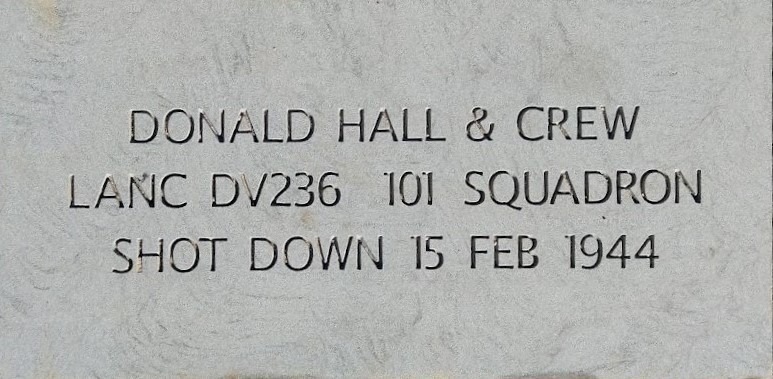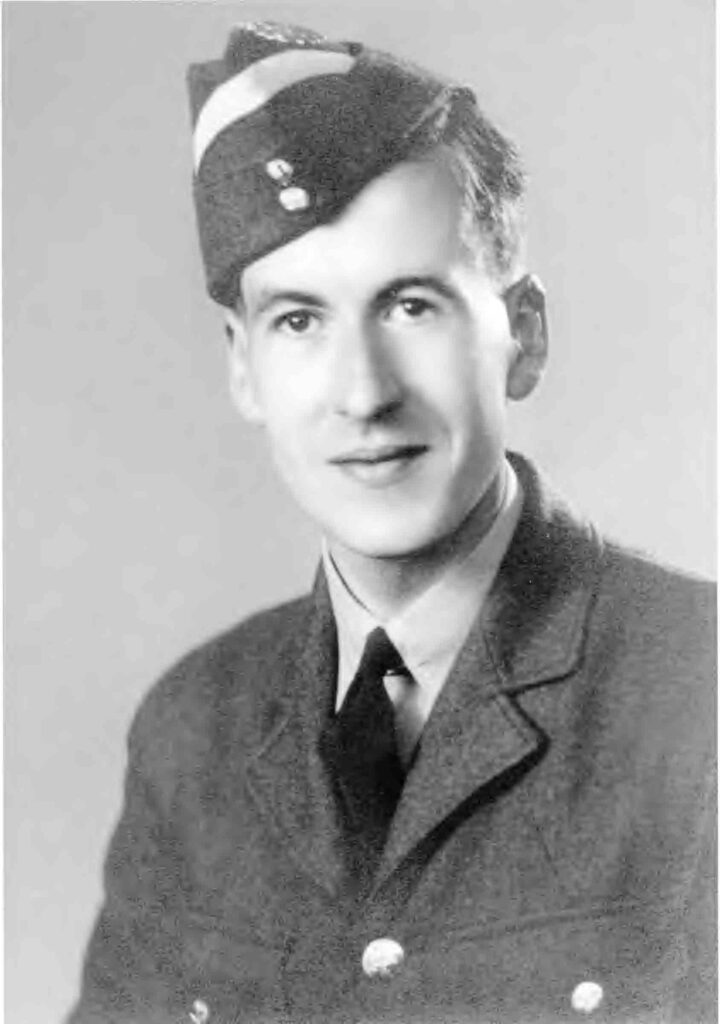Sgt Donald Hall DFM – Navigator 101 Squadron RAF
Originally from Bideford, Devon, Donald Hall worked at the Investigation Branch of the Post Office, in London. He got married the day before the Second World War was announced. Aged 25, he was not amongst those to be conscripted but he volunteered in 1942.
He completed initial training in Torquay, then RAF Coningsby, before training as a Navigator at RAF Bridgnorth and moving onto RAF Bobbington and RAF Wymeswold. Here Donald trained in Wellington Bombers and was paired with Pilot Officer David McConnell.
Following training in Halifax and Lancaster bombers at Blyton Base, Donald was signed to Bomber Command’s 101 Squadron, at Ludford Magna. He carried out Lancaster bombing missions throughout Germany between 12 August 1943 and 15 February 1944. Donald’s crew flew as part of the secretive Airborne Cigar (ABC) operations, carrying an 8th man to intercept and disrupt enemy transmissions.
Towards the end of their first tour, during the Battle of Berlin, their aircraft was shot down by a night fighter. The Pilot and two Air Gunners were killed in the attack. The Flight Engineer was unable to gain control of the Lancaster, so the remaining crew bailed out.
Donald took a parachute to a crew member and helped him out. When he went to get his own parachute, he couldn’t find it as the aircraft was spinning. He sat on the steps leading to the open escape hatch, watching the clouds lit by the fires underneath, twisting round and round, wondering whether to jump or stay. Suddenly, the Lancaster put its nose down and he heard his parachute sliding towards him. Quickly putting it on, he went out through the escape hatch.
He landed in the middle of their target, Berlin railway station, injuring his back landing on the tracks. The Germans were near and took his possessions. They smoked his beloved Player’s cigarettes but, after the war, the rest of his things were returned to him.
Lancaster DV236 to Berlin shot down, 15 February 1944:
- P/O David Whiteside McConnell – Pilot – killed
- Sgt Cyril Thompson – Flight Engineer – POW
- Sgt Donald Hall – Navigator – POW
- F/S R R Clarke – Wireless Operator / Air Gunner – POW
- F/S Harold William Hall – Bomb Aimer – POW
- Sgt Leslie Young – Air Gunner – killed
- W/O Richard William Brown – Air Gunner – killed
- P/O Otto Fischl – A/B S.D. – POW
Wing Commander R I Alexander wrote of Donald:
“He was a very popular member of a fine crew and a great asset to the Squadron. He has proved himself a most competent and efficient Navigator of aircraft and his many sorties over enemy territory have always been carried out with splendid courage and tenacity.”
Donald was taken to Dulag Luft, Frankfurt, and on to Stalag Luft 6, Heydekrug, on 2nd March 1944. He then went by cattle train and on foot to Stalag 357, as part of the Long March. He was first marched to Thorn in July 1944, before being moved to Fallingbostel the following month. (At one point, they were mistaken for Germans by the Allied aircraft, who fired on the marching prisoners.) Leaving Fallingbostel in April 1945, he was taken to the Military Lazarette, Voisingburg, 2 weeks later.
Of his time in the camps, he recalled: that the bunks were hard and uncomfortable, as some slats were used to keep the fires going; that the prisoners had little more than swede and potato soup (because of this, both veg were more or less banned at home for a long time); that he continued to wash regularly, despite the water being icy cold; and that he was able to keep his beloved wedding ring safe by hiding it in a tin of condensed milk.
Upon liberation, Donald was sent to Cosford Hospital. He was emaciated and had pneumonia but, fortunately, was able to fully recover. Like many who have been through such things, he didn’t talk much about his wartime experiences until many years later. He did, however, keep in touch with some of his friends from that era and attended many of the reunions.
Donald was a wonderful, intelligent and kind man and was incredibly lucky to return home, whilst so many didn’t. He returned to work at the GPO and was very active in his local community. He was a loving husband, father, grandfather and great-grandfather and lived to see his 90th birthday.


